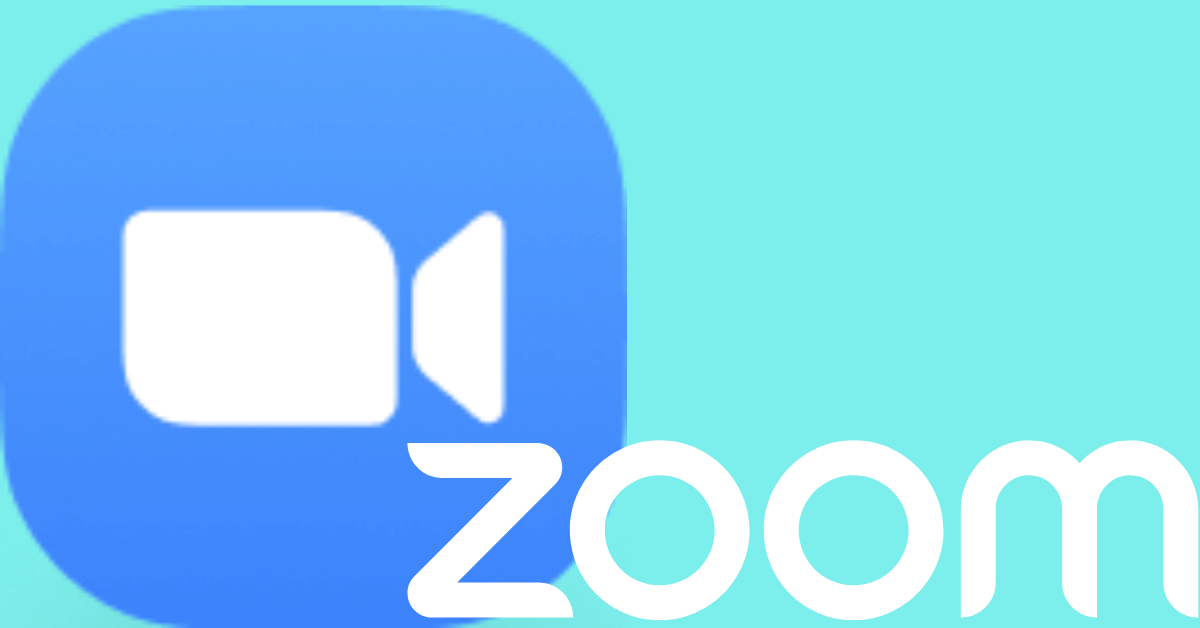Are you ready to step into the spotlight and land your dream job at one of the hottest tech companies around? Well, you’ve come to the right place!
Zoom has revolutionized the way we connect, and now it’s your turn to make a connection that could change your career forever.
But let’s face it – interviewing can be nerve-wracking, especially when you’re doing it through a screen. Don’t worry, though!
We’re here to turn those jitters into jazzy confidence.
In this guide, we’ll walk you through everything you need to know about Zoom interview questions and answers.
Whether you’re aiming for a tech role, a customer success position, or anything in between, we’ve got you covered. By the time you’re done reading, you’ll be ready to:
- Tackle those tricky questions with the finesse of a video conferencing pro
- Showcase your skills and personality (even through a webcam)
- Prove that you’re not just another face in the Zoom grid – you’re the next big thing Zoom needs!
Making a good impression on the hiring manager is crucial, so let’s dive in and get you prepped for the Zoom interview of your life!
- Preparing for Your Zoom Interview: Setting the Stage for Success
- Tech Check: Avoid the “Can You Hear Me Now?” Syndrome
- Top 10 Common Zoom Interview Questions and Answers: Your Time to Shine!
- Technical and Role-Specific Zoom Interview Questions and Answers: Showcase Your Expertise
- Behavioral Zoom Interview Questions and Answers: Showcase Your Soft Skills
- Closing the Interview: Leave a Lasting Impression
- Final Tips to Ace Your Zoom Interview
Boost Your Interview Skills Now
Improve your interview skills in under 10 minutes!
Join thousands of successful job seekers!

Preparing for Your Zoom Interview: Setting the Stage for Success
Know Your Audience: Zoom In on Zoom
Before you even think about answering questions, you need to become a Zoom aficionado.
- Deep dive into Zoom’s world: Explore their website, blog, and social media. What’s their mission? (Hint: It’s all about “delivering happiness”!)
- Product prowess: Familiarize yourself with Zoom’s full suite of products. It’s not just about video calls anymore!
- Culture club: Get a feel for Zoom’s company culture. Are you a good fit? (Spoiler alert: If you love innovation and remote work, you’re on the right track!)
- Stay current: Has Zoom been in the news lately? Knowing about recent developments can give you a serious edge.
Remember, showing that you’ve done your homework is like giving your interviewer a virtual high-five before you even start!

Tech Check: Avoid the “Can You Hear Me Now?” Syndrome
Nothing kills an interview vibe faster than technical difficulties. Let’s make sure you’re set up for crystal-clear communication:
- Test, test, 1-2-3: Do a trial run with a friend. Check your audio, video, and internet connection.
- Background check: Choose a clean, professional background. Or use a virtual background that showcases your personality (but keep it interview-appropriate, please!).
- Lighting is your friend: Position yourself facing a light source. You want to shine – literally and figuratively!
- Eye contact is key: Look at the camera, not the screen. It’s the digital equivalent of good eye contact.
- Silence is golden: Find a quiet space and mute notifications. The only dings should be the ones you score in the interview!
Pro tip: Have a backup plan. Know how to quickly switch to your phone if your computer decides to take an impromptu nap.
Body Language: Emote Like You Mean It
Just because you’re not in the same room doesn’t mean body language doesn’t matter. In fact, it might matter even more! Here’s how to ensure your non-verbal cues are saying all the right things:
- Sit up straight: Good posture shows you’re engaged and confident.
- Smile: It’s contagious, even through a screen!
- Use hand gestures: They can help emphasize points, but keep them natural and within the frame.
- Nod and react: Show you’re actively listening. Just don’t go overboard – you’re not a bobblehead!
Remember, your body language should say, “I’m excited to be here!” even if your stomach is doing somersaults.
The Zoom Hiring Process: Know What to Expect
Understanding Zoom’s hiring process can help calm your nerves and prepare you for what’s ahead. While it can vary depending on the role, here’s a general outline:
- Initial screen: Often a quick video call with a recruiter.
- Technical or skills assessment: This might be a coding challenge, a presentation, or a role-specific task.
- In-depth interviews: Usually multiple rounds with potential team members and managers.
- Final interview: Often with a senior leader or executive.
Each stage is an opportunity to showcase why you’re the perfect fit for Zoom. Are you ready to seize it? Just like in person interviews, Zoom interviews require thorough preparation and a professional setup to ensure you make a great impression.
Dressing Professionally: Look the Part
When it comes to a Zoom interview, dressing professionally is just as important as it would be for an in-person interview. Even though the interviewer can’t see your entire outfit, dressing professionally will help you feel more confident and prepared for the interview. Here are some tips for dressing professionally for a Zoom interview:
- Wear a professional top: A blouse or a button-down shirt is a good choice. Avoid low-cut or tight-fitting tops.
- Choose a neutral background: A plain white or light-colored wall is best. Avoid busy patterns or bright colors.
- Keep jewelry to a minimum: A simple necklace or earrings are fine, but avoid anything too flashy.
- Pay attention to grooming: Make sure your hair is clean and styled neatly, and you’ve trimmed your nails.
By dressing professionally, you’ll show the interviewer that you’re taking the interview seriously and that you’re willing to put in the effort to make a good impression.
Now that you’ve set the stage for success, are you feeling more prepared? Great! In the next sections, we’ll dive into specific Zoom interview questions and answers that’ll help you knock your interviewer’s socks off. Ready to zoom into the details?

Top 10 Common Zoom Interview Questions and Answers: Your Time to Shine!
Alright, future Zoom star, it’s time to tackle the big questions! Remember, these aren’t just any interview questions – they’re your opportunity to show why you’re the perfect fit for Zoom’s dynamic, innovative environment. Let’s dive in! It’s crucial to practice common interview questions and formulate strong interview answers to impress potential employers.
1. “Tell me about yourself.”
Why they’re asking: This classic job interview opener is your chance to set the tone. Zoom wants to know if you can communicate clearly and engagingly – after all, clear communication is their bread and butter!
How to answer: Think of this as your personal elevator pitch. Start with your current role, then backtrack to how you got there, highlighting experiences relevant to Zoom. Wrap it up with why you’re excited about this opportunity.
“I’m currently a senior software engineer at TechCo, where I’ve been leading our video streaming optimization efforts. My journey into tech started with a fascination for connecting people across distances – I built my first video chat app in college! Since then, I’ve worked on scaling communication platforms and improving user experiences. Zoom’s mission of making video communication frictionless really resonates with me, and I’m excited about the possibility of contributing to a product that’s changing how the world connects.”
2. “Why do you want to work for Zoom?”
Why they’re asking: Zoom wants to know if you’ve done your homework and if your values align with theirs.
How to answer: Be specific! Mention Zoom’s culture, recent innovations, or future plans that excite you. Connect these to your own career goals and values.
“Zoom’s commitment to innovation really stands out to me. I was particularly impressed by the recent launch of Zoom Events, which shows the company is always looking for new ways to facilitate connection. As someone passionate about creating inclusive digital spaces, I’m excited by the possibility of contributing to products that bring people together, regardless of distance. Plus, Zoom’s emphasis on ‘delivering happiness’ aligns perfectly with my belief that technology should enhance human experiences, not complicate them.”
3. “What are your strengths?”
Why they’re asking: They want to know if your strong suits align with what Zoom needs in a zoom job interview.
How to answer: Choose strengths that are relevant to the role and Zoom’s values. Use the STAR method (Situation, Task, Action, Result) to provide a concrete example of each strength in action.
“One of my key strengths is adaptability, which I believe is crucial in a fast-paced tech environment like Zoom’s. For example, when our team suddenly had to shift to remote work last year, I took the initiative to set up a new project management system that improved our productivity by 30%. Another strength is my ability to simplify complex technical concepts. In my current role, I created a series of video tutorials that reduced our customer support tickets by 25%.”
4. “What is your greatest weakness?”
Why they’re asking: Zoom wants to gauge your self-awareness and see how you handle challenges.
How to answer: Be honest, but choose a weakness that isn’t critical to the job. More importantly, focus on how you’re actively working to improve.
“I sometimes struggle with delegating tasks, as I can be a bit of a perfectionist. However, I’ve recognized that this can slow down projects and prevent team members from growing. To address this, I’ve been using a delegation framework that helps me identify which tasks are best suited for delegation. I’ve also been actively mentoring junior team members, which has improved our overall team efficiency and helped me become more comfortable with delegation.”
5. “Describe a time you led a remote team.”
Why they’re asking: Zoom is all about remote collaboration, so they want to know you can thrive in zoom job interviews and remote work environments.
How to answer: Use the STAR method to describe a specific situation where you successfully led a remote team. Focus on communication strategies, tools you used, and how you maintained team cohesion.
“In my current role, I led a team of five developers spread across three time zones to launch a new feature. The main challenge was keeping everyone aligned and motivated. I implemented daily stand-ups via video call, used a shared project management tool to track progress, and scheduled regular one-on-ones to address any concerns. I also organized virtual team-building activities to maintain morale. Despite the challenges of remote work, we launched the feature on time, and user adoption exceeded our targets by 15%.”
6. “How do you handle stress in a fast-paced environment?”
Why they’re asking: Zoom operates in a rapidly evolving industry, so they need to know you can keep cool under pressure.
How to answer: Describe your specific strategies for managing stress, and if possible, give an example of how you’ve applied these in a work situation.
“I’ve found that the key to managing stress in a fast-paced environment is a combination of prioritization and self-care. I use the Eisenhower Matrix to prioritize tasks, focusing on what’s both urgent and important. For self-care, I practice mindfulness meditation for 10 minutes each morning, which helps me stay centered throughout the day.
Last quarter, when we were racing to meet a critical deadline, I applied these strategies to keep our team focused and calm. We not only met the deadline but also maintained high code quality, resulting in a smooth launch with minimal post-release issues.”
7. “What do you know about Zoom’s product suite?”
Why they’re asking: Zoom wants to see if you’ve done your research and understand the breadth of their offerings.
How to answer: Demonstrate your knowledge of Zoom’s main products and any recent additions. Bonus points if you can mention how they integrate or complement each other.
“Zoom’s core product is, of course, its video conferencing platform, which has become synonymous with remote meetings. But Zoom’s suite goes far beyond that. There’s Zoom Phone for cloud-based business communications, Zoom Rooms for conference room solutions, and Zoom Events for virtual experiences. I’m particularly impressed by Zoom’s venture into hardware with Zoom for Home. The integration between these products creates a seamless communication ecosystem, which I believe is key to Zoom’s success in the evolving workplace landscape.”
8. “How would you contribute to Zoom’s mission of ‘delivering happiness’?”
Why they’re asking: This question tests your understanding of Zoom’s culture and values, and how you’d fit into them.
How to answer: Connect your personal values and work style to Zoom’s mission. Provide specific examples of how you’ve contributed to positive work environments or customer satisfaction in the past.
“To me, ‘delivering happiness’ means creating products that not only function well but also bring joy and ease to people’s lives. In my current role, I led an initiative to redesign our user interface based on customer feedback. The result was a 40% increase in our Net Promoter Score. At Zoom, I’d apply this user-centric approach to continually improve the product experience. Additionally, I believe in fostering a positive team environment. I’ve initiated ‘Fun Friday’ virtual meetups in my current team, which has boosted morale and collaboration. I’d love to bring this spirit of community and joy to my work at Zoom.”
9. “Describe your experience with video conferencing technologies.”
Why they’re asking: Zoom wants to gauge your familiarity with their industry and your potential to contribute insights.
How to answer: Discuss your experience both as a user and, if applicable, as a developer or manager of video conferencing systems. Highlight any unique insights you’ve gained.
“I’ve been using various video conferencing platforms for over a decade, both personally and professionally. As a remote team leader, I’ve experienced firsthand the evolution of these technologies. I’ve used Zoom extensively and appreciate its reliability and user-friendly interface. From a technical perspective, I’ve worked on optimizing video compression algorithms in my current role, which has given me insights into the challenges of delivering high-quality video over varying network conditions. I’m fascinated by the potential of AI in enhancing video experiences, like Zoom’s virtual backgrounds and lighting adjustment features.”
10. “Where do you see the future of remote communication heading?”
Why they’re asking: Zoom is at the forefront of communication technology, so they want team members who can think ahead and innovate.
How to answer: Share your vision for the future of remote communication. Consider trends in technology, work culture, and global connectivity. Show how your ideas align with Zoom’s direction.
“I believe the future of remote communication will be increasingly immersive and seamlessly integrated into our daily lives. We’re already seeing the beginnings of this with VR and AR technologies. I envision a future where Zoom could offer holographic meetings, making remote participants feel truly present. AI will play a bigger role, perhaps offering real-time language translation or generating meeting summaries. However, I also think there will be a growing emphasis on digital well-being, with features that help prevent ‘Zoom fatigue’ and promote healthier remote work habits. Zoom’s recent focus on user experience and well-being aligns perfectly with this vision.”
Boost Your Interview Skills Now
Improve your interview skills in under 10 minutes!
Join thousands of successful job seekers!

Technical and Role-Specific Zoom Interview Questions and Answers: Showcase Your Expertise
Now that we’ve warmed up with the common questions, it’s time to dive into the nitty-gritty. Remember, these questions are your chance to really shine and show off your technical chops! Running a mock video interview can help simulate the real interview environment, allowing you to practice your responses and improve your performance.
1. “How would you improve Zoom’s core platform?”
Why they’re asking: Zoom wants to see your innovative thinking and how well you understand their product.
How to answer: Identify a specific area for improvement, explain why it’s important, and outline a high-level plan for implementing the change.
“One area I’d focus on improving is Zoom’s AI-powered noise cancellation. While it’s already quite good, I believe we could enhance it further by implementing adaptive learning algorithms that improve over time based on user feedback. This would involve:
- Collecting anonymized data on instances where noise cancellation didn’t perform optimally.
- Using this data to train a machine learning model to recognize and filter out a wider range of background noises.
- Implementing a user feedback loop where users can easily report if a sound was incorrectly filtered or not filtered.
- Regularly updating the model based on this feedback.
This improvement would further enhance Zoom’s audio quality, especially in challenging environments, maintaining Zoom’s edge in an increasingly competitive market.“
2. “Describe a time you solved a technical problem in a remote environment.”
Why they’re asking: Zoom operates in a remote-first environment, so they want to know you can troubleshoot effectively from afar.
How to answer: Use the STAR method to describe a specific situation, the technical challenge, your approach to solving it, and the results.
“In my current role, we faced a critical issue where our main application was experiencing sporadic crashes in production, but only for a subset of users. The challenge was intensified by our fully remote team spread across multiple time zones.
To address this, I:
- Set up a war room on our video conferencing platform for real-time collaboration.
- Implemented enhanced logging to capture more detailed information about the crashes.
- Created a shared dashboard to visualize the crash data and identify patterns.
- Used pair programming sessions to debug the issue collaboratively.
After 48 hours of intensive work, we identified that the crashes were caused by a race condition in our database connection pool, but only under high load. We implemented a fix, and our application stability improved by 99.9%.
This experience taught me the importance of clear communication, collaborative tools, and structured problem-solving in a remote environment.“
3. “How do you approach system design for a large-scale application like Zoom?”
Why they’re asking: Zoom needs engineers who can think at scale and design robust, efficient systems.
How to answer: Outline a structured approach to system design, emphasizing scalability, reliability, and performance. Use Zoom-specific examples if possible.
“When approaching system design for a large-scale application like Zoom, I follow these key steps:
- Requirements gathering: Understand the functional and non-functional requirements. For Zoom, this might include supporting millions of concurrent users, ensuring low latency, and maintaining high availability.
- High-level architecture: Design the overall system architecture. For Zoom, this could involve a microservices architecture to allow different components (video, audio, chat) to scale independently.
- Data management: Design the data model and storage solutions. Zoom might use a combination of relational databases for user data and NoSQL databases for real-time session information.
- Scalability: Implement strategies like horizontal scaling and load balancing. For Zoom, this could mean using a global content delivery network (CDN) to reduce latency.
- Reliability: Design for fault tolerance and disaster recovery. This might involve multi-region deployments and automatic failover mechanisms.
- Security: Implement end-to-end encryption, secure authentication, and access controls.
- Performance optimization: Use caching strategies, optimize network protocols, and implement efficient algorithms for video and audio processing.
- Monitoring and logging: Design comprehensive monitoring systems to quickly identify and resolve issues.
Throughout the process, I’d collaborate closely with other teams to ensure the design meets all stakeholders’ needs and aligns with Zoom’s overall architecture and goals.“
4. “Explain how you would ensure security and privacy in video communications.”
Why they’re asking: Security and privacy are top priorities for Zoom, especially given past challenges in this area.
How to answer: Demonstrate your knowledge of security best practices and how they apply to video communications. Show awareness of Zoom’s specific security features and past challenges.
“Ensuring security and privacy in video communications involves multiple layers of protection:
- End-to-end encryption: Implement robust encryption protocols to secure data in transit and at rest. Zoom’s move to AES 256-bit GCM encryption is a great example.
- Access controls: Use strong authentication methods, like two-factor authentication, and implement role-based access controls.
- Meeting security: Features like waiting rooms, password protection, and host controls (e.g., ability to remove participants) are crucial.
- Network security: Utilize firewalls, intrusion detection systems, and regular security audits to protect the infrastructure.
- Data privacy: Implement strict data handling policies, including data minimization and retention policies that comply with regulations like GDPR.
- Secure development practices: Follow secure coding practices, conduct regular code reviews, and perform penetration testing.
- User education: Provide clear guidelines and education for users on best practices for secure video conferencing.
- Transparency: Maintain open communication about security practices and promptly address any vulnerabilities discovered.
I’d also establish a bug bounty program to encourage ethical hackers to find and report potential vulnerabilities, similar to Zoom’s current program. Continuous improvement in security measures is key, as threats are always evolving.“
5. “What strategies would you use to optimize Zoom’s performance during high-traffic periods?”
Why they’re asking: Zoom needs to maintain high performance even under extreme load, so they want to see your problem-solving skills in this area.
How to answer: Discuss both infrastructure-level and application-level optimizations. Show that you understand the unique challenges of real-time video communication.
“Optimizing Zoom’s performance during high-traffic periods would involve a multi-faceted approach:
- Load balancing: Implement intelligent load balancing to distribute traffic across multiple servers and data centers. This could involve geographic-based routing to direct users to the nearest data center.
- Auto-scaling: Use cloud services that can automatically scale resources up or down based on demand.
- Content Delivery Network (CDN): Utilize a global CDN to cache static content and reduce latency for users worldwide.
- Optimized video codec: Implement adaptive bitrate streaming and efficient video codecs to optimize video quality based on available bandwidth.
- Microservices architecture: Design the system as loosely coupled microservices to allow independent scaling of different components (e.g., video, audio, chat).
- Database optimization: Use database sharding, read replicas, and caching strategies to handle increased database load.
- Queue management: Implement a robust queue management system for non-real-time tasks to prevent system overload.
- Traffic prioritization: Prioritize critical real-time traffic (like video and audio) over less time-sensitive operations.
- Efficient resource utilization: Optimize server-side processes to use resources efficiently, such as implementing worker threads for CPU-intensive tasks.
- Monitoring and alerting: Set up comprehensive real-time monitoring and alerting systems to quickly identify and address performance bottlenecks.
- Graceful degradation: Design the system to gracefully reduce non-essential features during extreme load to maintain core functionality.
By combining these strategies, we can ensure that Zoom maintains high performance and a quality user experience even during peak usage times.“

Behavioral Zoom Interview Questions and Answers: Showcase Your Soft Skills
Now that we’ve flexed our technical muscles, let’s shift gears to behavioral questions. Remember, at Zoom, it’s not just about what you know – it’s about how you work with others and handle challenges.
Additionally, being well-prepared for an online interview, including making necessary technological arrangements and maintaining a professional appearance, is crucial as many companies adopt hybrid hiring approaches.
1. “Describe a time you worked with a difficult team member.”
Why they’re asking: Zoom values collaboration, so they want to know how you handle interpersonal challenges.
How to answer: Use the STAR method to describe the situation, your approach to resolving the conflict, and the positive outcome. Focus on professional behavior and constructive problem-solving.
“In my previous role, I was working on a critical project with a team member who consistently missed deadlines and was often unresponsive. This was jeopardizing our project timeline.
First, I scheduled a one-on-one video call with them to understand if there were any underlying issues. I discovered they were overwhelmed with their workload and struggling with some of the technical aspects of the project.
I worked with them to break down their tasks into more manageable chunks and set up regular check-ins. I also connected them with a senior developer who could provide technical mentorship.
As a result, their performance improved significantly. We not only completed the project on time but also strengthened our team dynamics. This experience taught me the importance of empathy, clear communication, and proactive problem-solving in team settings.“
2. “How do you stay motivated while working remotely?”
Why they’re asking: Zoom operates in a remote-first environment, so they want to ensure you can stay productive and engaged without traditional office structure.
How to answer: Share specific strategies you use to maintain motivation and productivity. Highlight your self-discipline and ability to create a positive remote work environment.
“Staying motivated while working remotely is all about creating structure and maintaining connections. Here’s my approach:
- Establish a routine: I start each day at the same time and follow a consistent schedule, which helps me stay focused.
- Dedicated workspace: I’ve set up a home office that’s separate from my living area to maintain a work-life balance.
- Regular check-ins: I schedule virtual coffee chats with colleagues to stay connected and combat isolation.
- Goal setting: I use the OKR (Objectives and Key Results) framework to set clear, measurable goals for myself each quarter.
- Virtual team building: I initiate and participate in virtual team activities, like online game sessions or virtual lunches.
- Continuous learning: I allocate time each week for professional development, which keeps me engaged and growing.
- Physical activity: I take short walks between meetings to stay energized and clear my mind.
By implementing these strategies, I’ve found that I’m often more productive working remotely than I was in a traditional office setting. It’s all about finding what works for you and sticking to it.“
3. “Tell me about a project where you had to meet a tight deadline.”
Why they’re asking: Zoom operates in a fast-paced environment, so they want to know how you perform under pressure.
How to answer: Use the STAR method to describe a specific situation. Focus on your planning, prioritization, and problem-solving skills.
“In my current role, we had to implement a new authentication system for our platform within just two weeks due to a sudden security vulnerability discovery.
To tackle this challenge:
- I quickly assembled a cross-functional team and conducted a rapid planning session to break down the project into manageable tasks.
- We prioritized the most critical features and created a detailed timeline with daily milestones.
- I implemented a daily stand-up meeting to track progress and quickly address any blockers.
- We used pair programming for complex parts of the implementation to reduce errors and speed up development.
- I coordinated with our QA team to run parallel testing as we developed, saving time in the final stages.
Despite the tight timeline, we successfully implemented the new system two days ahead of schedule. This experience reinforced the importance of clear communication, efficient planning, and team collaboration when working under pressure.“
4. “How do you handle receiving constructive criticism?”
Why they’re asking: Zoom values continuous improvement and wants team members who can accept and act on feedback positively.
How to answer: Emphasize your openness to feedback and your ability to use it for personal and professional growth. Provide an example if possible.
“I view constructive criticism as a valuable tool for growth and improvement. Here’s my approach:
- Listen actively: When receiving feedback, I focus on understanding the other person’s perspective without becoming defensive.
- Express gratitude: I always thank the person for their feedback, recognizing that it takes effort to provide thoughtful criticism.
- Reflect and analyze: I take time to consider the feedback objectively and identify areas where I can improve.
- Create an action plan: I develop specific, actionable steps to address the feedback.
- Follow up: I schedule check-ins to discuss my progress and seek additional input.
For example, in my last performance review, my manager suggested I could improve my public speaking skills. I appreciated this feedback and enrolled in a public speaking course. I’ve since led several successful team presentations and even spoke at a local tech meetup. This experience showed me how embracing constructive criticism can lead to significant personal growth.“
5. “Describe a situation where you had to adapt quickly to a change in priorities.”
Why they’re asking: Zoom operates in a dynamic industry, so they want team members who can be flexible and pivot quickly when needed.
How to answer: Use the STAR method to describe a specific situation where you demonstrated adaptability. Highlight your decision-making process and how you managed any resulting challenges.
“In my previous role, our team was midway through developing a new feature when our CEO announced a surprise partnership that required us to quickly pivot and integrate our product with the partner’s API.
Here’s how I handled the situation:
- I quickly organized a team meeting to discuss the new priorities and their implications.
- We re-evaluated our current sprint and identified tasks that could be paused or delegated.
- I worked with the product manager to break down the new integration work into manageable stories.
- We adjusted our roadmap and communicated the changes to all stakeholders.
- I set up daily check-ins to ensure we were progressing smoothly and to address any blockers quickly.
Despite the unexpected change, we successfully delivered the integration on time. This experience taught me the importance of remaining calm under pressure, clear communication, and agile planning. It also showed me that change, while challenging, often leads to exciting new opportunities.“

Closing the Interview: Leave a Lasting Impression
The final few minutes of a Zoom interview are just as important as the first few minutes. Here are some tips to help you close the interview and leave a lasting impression:
- Thank the interviewer: Express your gratitude for the opportunity to interview, and thank the interviewer for their time.
- Reiterate your interest: Reiterate your interest in the company and the role, and express your enthusiasm for the opportunity.
- Ask about next steps: Ask the interviewer about the next steps in the process, and when you can expect to hear back from them.
- End on a positive note: End the interview on a positive note, and leave the interviewer with a lasting impression of your confidence and professionalism.
By closing the interview on a positive note, you’ll leave a lasting impression on the interviewer and show that you’re a strong fit for the company and the role.

Final Tips to Ace Your Zoom Interview
You’re almost there! Here are some last-minute tips to help you knock your Zoom interview out of the park:
- Test your tech: Double-check your internet connection, camera, and microphone before the interview. Have a backup plan (like your phone’s hotspot) just in case.
- Set the scene: Ensure your background is clean and professional. Natural light is your friend, but make sure it’s not behind you.
- Dress for success: Dress professionally from head to toe. It’ll boost your confidence, and you never know if you’ll need to stand up!
- Have your materials ready: Keep your resume, the job description, and any notes nearby for easy reference.
- Be engaged: Make eye contact by looking at your camera, not your screen. Nod and smile to show you’re actively listening.
- Show your passion: Let your enthusiasm for Zoom and the role shine through. Genuine excitement is contagious!
- Ask thoughtful questions: Prepare a few questions about the role, team, or Zoom’s future plans. It shows you’re truly interested.
- Follow up: Send a thank-you email within 24 hours, reiterating your interest and touching on key points from the interview.
Remember, you’ve got this! Your preparation and unique experiences have brought you this far. Now it’s time to show Zoom why you’re the perfect addition to their team. Being well-prepared for Zoom interviews is crucial; consider using a laptop for professionalism, crafting a strong introductory statement, and utilizing available tips and resources to help you ace your Zoom interviews.
Take a deep breath, smile, and go ace that interview. The Zoom team is lucky to have the chance to meet you. Good luck!
Boost Your Interview Skills Now
Improve your interview skills in under 10 minutes!
Join thousands of successful job seekers!




